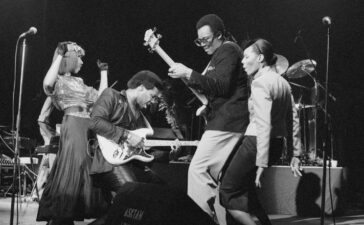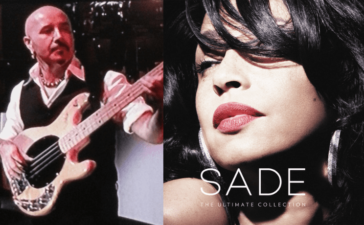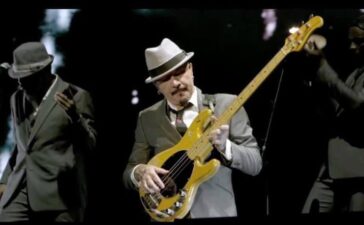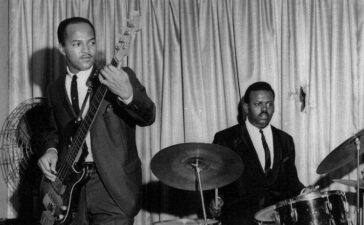Flea (born Michael Peter Balzary), the bassist for Red Hot Chili Peppers, is one of the most innovative and influential bass players of the modern era. His distinctive sound, which blends funk, rock, punk, and jazz, has left an indelible mark on bass playing and popular music as a whole. Flea’s ability to integrate slap bass, melodic phrasing, and raw rhythmic power has resulted in some of the most memorable basslines in rock history. Here’s a look at some of his most iconic basslines that have defined his career and shaped the sound of Red Hot Chili Peppers.
1. “Give It Away” (1991)
“Give It Away” from Blood Sugar Sex Magik is one of Flea’s most famous basslines. The song features a high-energy, funky slap bass riff that drives the entire track. Flea’s slap technique is central to this song, utilizing fast, percussive strikes on the strings that give the track its relentless groove. The riff itself is simple but powerful, focusing on rhythmic intensity rather than complex harmonic changes.
Flea’s slap bass on “Give It Away” became a defining sound for the band during the early 1990s, blending the influences of funk and punk rock. His approach to the bassline is a perfect example of how he can create a simple yet infectious groove that sticks in listeners’ heads long after the song ends .
2. “Around the World” (1999)
The opening bassline of “Around the World” from Californication is a testament to Flea’s technical skill and musical versatility. The song starts with a rapid, dizzying bass riff that covers a wide range of notes, setting the stage for the driving energy that follows. Flea combines fingerstyle plucking with fast transitions across the fretboard, creating a highly dynamic and melodic introduction.
What makes the bassline in “Around the World” so distinctive is the way it evolves throughout the song. Flea alternates between aggressive funk-inspired grooves and more laid-back, melodic passages, demonstrating his ability to shift seamlessly between styles within the same track .
3. “Under the Bridge” (1991)
Though not as bass-centric as some of Flea’s other tracks, “Under the Bridge” from Blood Sugar Sex Magik is notable for its subtle and melodic bassline that perfectly complements the song’s introspective mood. Rather than dominating the track, Flea’s bass provides a rich, supportive foundation for the guitar and vocals.
His playing in this song is more restrained, focusing on enhancing the emotional tone of the music. The bassline in “Under the Bridge” follows the chord changes with fluidity and grace, demonstrating Flea’s understanding of when to step back and allow the melody to take center stage .
4. “Can’t Stop” (2002)
“Can’t Stop,” from By the Way, features one of Flea’s most infectious and driving basslines. The song opens with a punchy, syncopated bass riff that immediately grabs the listener’s attention. Flea uses a fingerstyle technique to create a tight, rhythmic groove that serves as the backbone of the entire track.
The energy in “Can’t Stop” comes from Flea’s relentless bass playing, which blends funk and rock elements into a seamless, propulsive groove. His use of syncopation and ghost notes adds depth to the rhythm, creating a sense of movement that never lets up throughout the song.
5. “Aeroplane” (1995)
In “Aeroplane,” from One Hot Minute, Flea delivers a bassline that combines slap and fingerstyle playing to create a smooth, groove-heavy foundation. The bass riff in the verses is melodic and funky, featuring Flea’s signature percussive slaps while maintaining a melodic contour that complements the vocal lines.
The chorus of “Aeroplane” sees Flea switch to a more aggressive, driving bassline, adding to the dynamic shifts in the song. His ability to balance melody and rhythm is on full display, making “Aeroplane” one of his most well-rounded performances.
6. “Hump de Bump” (2006)
On “Hump de Bump,” from Stadium Arcadium, Flea returns to his funk roots with a groove-heavy slap bassline. The song is driven by the rhythm section, with Flea’s bass providing the infectious groove that powers the track. His playing in this song is playful, tight, and full of energy, showing off his ability to fuse funk with rock in a way that is uniquely his own.
The bassline is marked by its syncopated rhythms and slap technique, creating a danceable, upbeat feel. Flea’s slap bass in “Hump de Bump” harkens back to the band’s earlier, funk-driven sound while also showcasing his evolution as a musician.
Techniques That Define Flea’s Style
- Slap Bass: Flea is renowned for his slap bass technique, where he strikes the strings with his thumb while pulling them with his fingers to create a percussive sound. This technique has become a hallmark of his funk-inspired playing, particularly in songs like “Give It Away” and “Hump de Bump.”
- Melodic Phrasing: While Flea is known for his rhythmic playing, he is also adept at creating melodic basslines that enhance the harmonic structure of a song. Tracks like “Under the Bridge” and “Scar Tissue” showcase his ability to balance groove with melodic sensibility.
- Syncopation: Flea frequently uses syncopation to give his basslines a rhythmic complexity, playing off the beat to create a dynamic, driving groove. This is evident in songs like “Can’t Stop” and “Around the World.”
Flea’s Legacy
Flea’s contributions to the bass guitar and music in general are monumental. He has redefined what it means to be a bassist in a rock band, integrating elements of funk, punk, and jazz into his playing. His ability to groove, combined with his technical prowess, has earned him a reputation as one of the greatest bassists of all time. Whether slapping or playing melodically, Flea’s basslines have become iconic, shaping the sound of Red Hot Chili Peppers and influencing countless bass players across genres.









